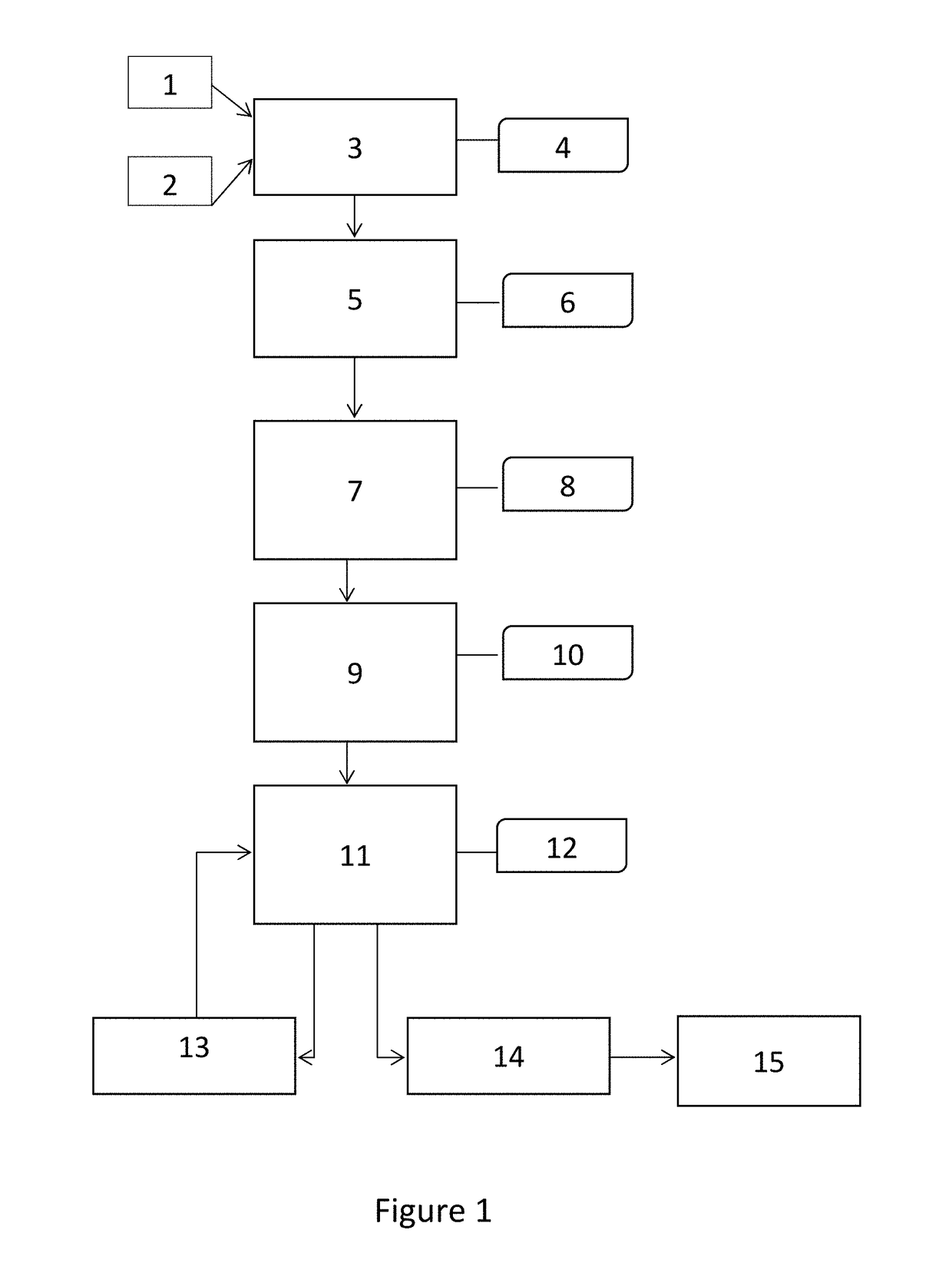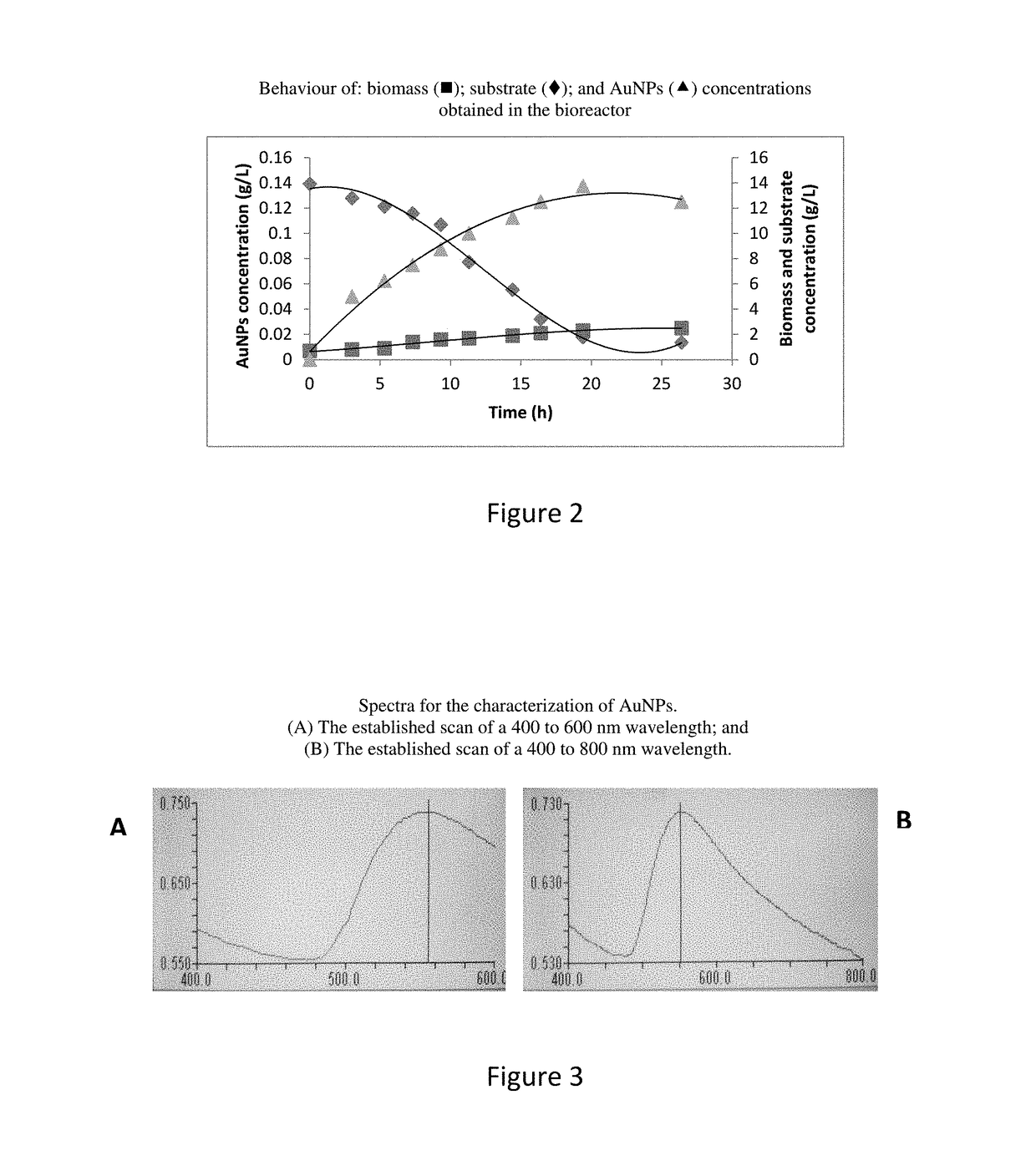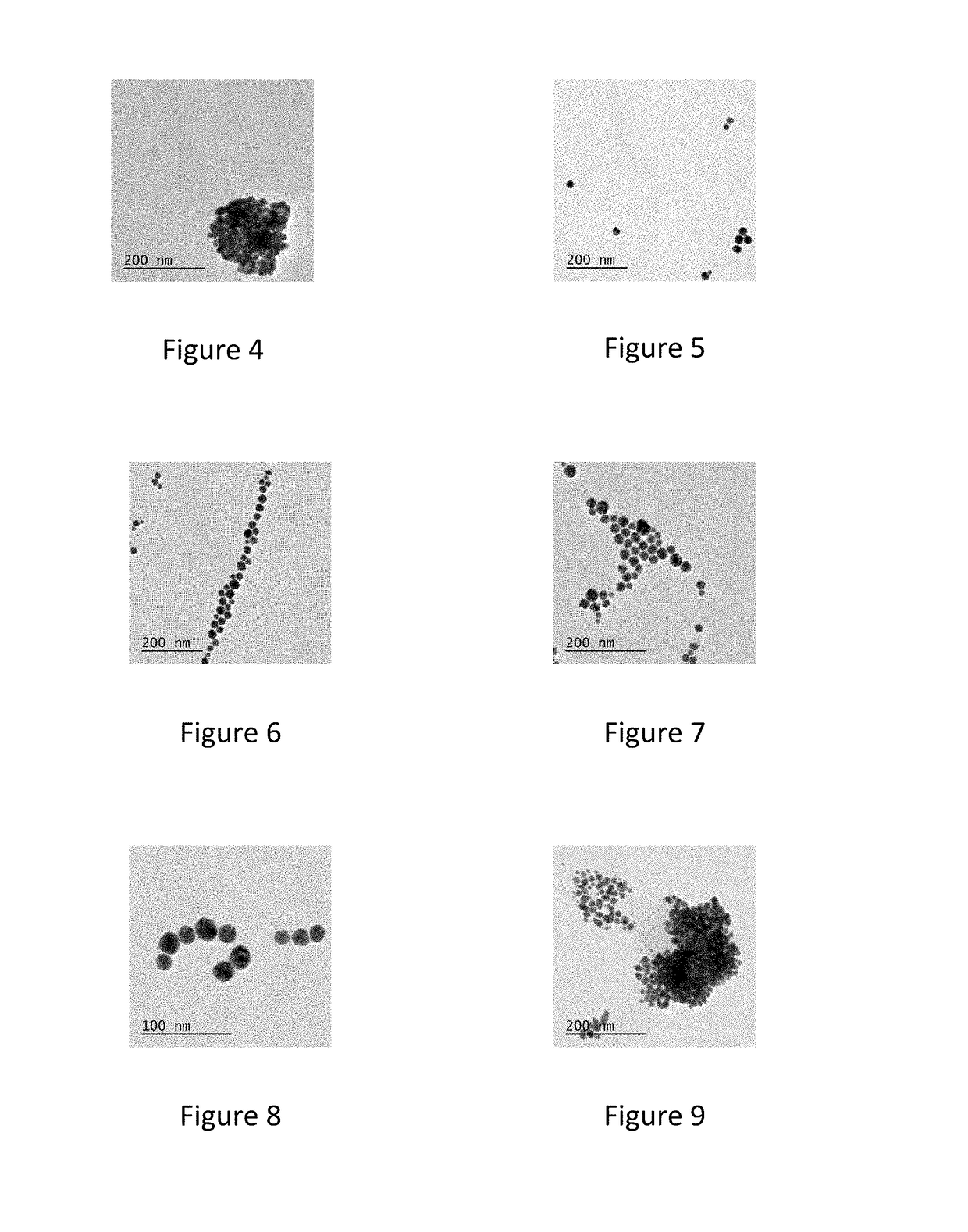Biological process for producing magnetic nanoparticles
a biochemical process and magnetic nanoparticle technology, applied in the direction of fermentation, etc., can solve the problems of inability to compete industrially, waste toxic to the environment, chemical methods are dangerous for the environment, etc., and achieve the effect of high thermic conductivity and efficient processing
- Summary
- Abstract
- Description
- Claims
- Application Information
AI Technical Summary
Benefits of technology
Problems solved by technology
Method used
Image
Examples
example 1
r Establishing the Optimum Production Conditions at Laboratory Level
[0082]The Bacillus mojavensis producer microorganism deposited under the indication CO01 before the International Authority for the Deposit of Microorganisms of name Colección Española de Cultivos Tipo (CECT), under the number CET 8698, was used, for which the optimum growth conditions and gold nanoparticles production rail, were established (upstream-fermentation-downstream) by an experimental design Box-Behnken (1960) for three factors (temperature, stirring speed and gold salts concentration) and three levels. That is, in total thirteen experiments in duplicate were carried out, of which 286 samples were obtained to which substrate, product and biomass concentrations were determined. Finally, thirteen more samples were further processed to determine the percentage of organic matter. Overall, a total of 1157 measurements were carried out.
[0083]The values for biomass and product were obtained with dry weight. The a...
example 2
r Establishing the Optimum Production Conditions at Pilot Level
[0105]Once the optimum conditions for generating nanoparticles were determined, a batch culture in stirred tank-like bioreactors of 7 litres capacity, was established. As scaling up criteria, the geometric similarity and Reynolds Number were used, the latter because by maintaining the flow rate, the mixing, cut effort and air bubbles dispersion ensures that they are maintained constant, apart from favouring the micromixing.
[0106]In the case of the geometric similarity, the same ratios in the shape factors were maintained. Once the conditions at laboratory level, which gave the size and shape characteristics of the gold nanoparticles, were determined, fermentations were carried out in a stirring tank-like bioreactor, varying the conditions of stirring rate, pH and aeration, thereby obtaining the kinetic parameters (shown on Table 5) and the conditions with which nanoparticles with the desired sizes were obtained.
[0107]Aft...
example 3
particles Characterization by UV-Visible Spectrophotometry
[0114]To characterize the gold nanoparticles by UV-Visible spectrophotometry, scanning at 400-800 nm wavelengths was carried out. The highest optical absorbance peak is shown in the ranges of 550-570 nm depending on the diameter. FIG. 3 shows spectra images to characterize the obtained gold nanoparticles, in which it is possible to acknowledge: (A) the established scan of a 400 to 600 nm wavelength; and (B) the established scan of a 400 to 800 nm wavelength.
PUM
| Property | Measurement | Unit |
|---|---|---|
| temperature | aaaaa | aaaaa |
| temperature | aaaaa | aaaaa |
| temperature | aaaaa | aaaaa |
Abstract
Description
Claims
Application Information
 Login to View More
Login to View More - R&D
- Intellectual Property
- Life Sciences
- Materials
- Tech Scout
- Unparalleled Data Quality
- Higher Quality Content
- 60% Fewer Hallucinations
Browse by: Latest US Patents, China's latest patents, Technical Efficacy Thesaurus, Application Domain, Technology Topic, Popular Technical Reports.
© 2025 PatSnap. All rights reserved.Legal|Privacy policy|Modern Slavery Act Transparency Statement|Sitemap|About US| Contact US: help@patsnap.com



